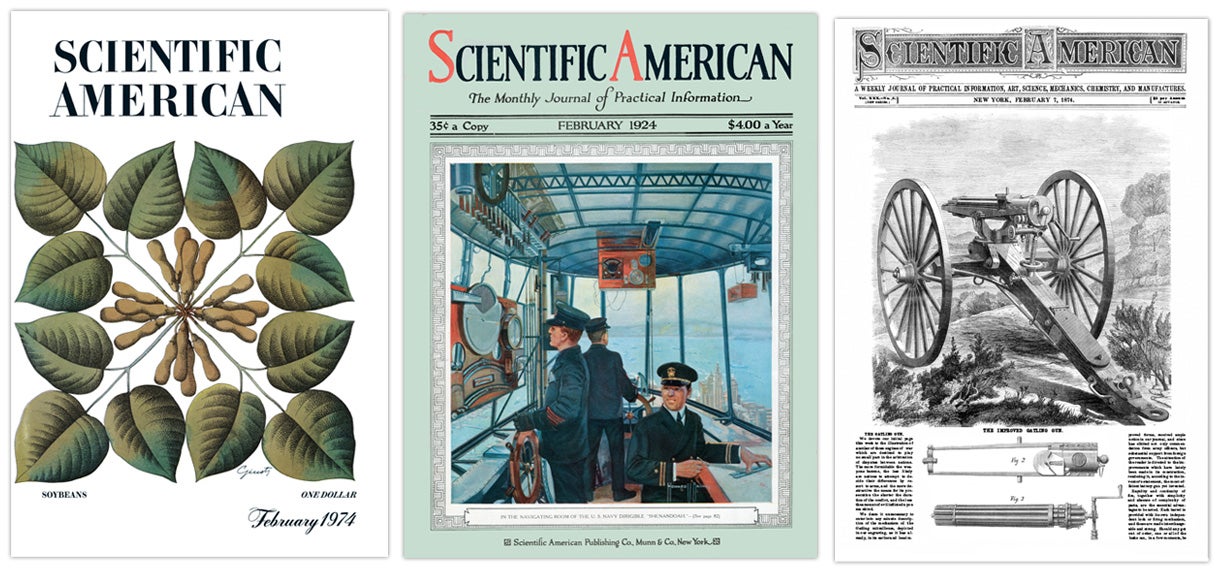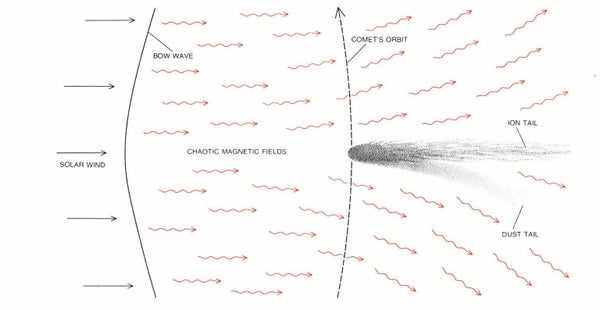1974
Telescope to Probe Hubble Constant
“NASA is planning a 120-inch reflecting telescope to be launched in the early 1980s. The Large Space Telescope will probably be the first large payload put into orbit by the 'space shuttle.' Astronomers will be able to map the recessional velocities of galaxies to see if there are any irregularities in the Hubble expansion of the universe that could be evidence for a deceleration of expansion. Moreover, because of its ability to probe the universe to magnitudes 100 times fainter than can be reached from the ground, the telescope should reveal many new objects in other galaxies.”
In 1969 the National Academy of Sciences approved the Large Space Telescope project. The instrument was later renamed the Hubble Space Telescope and was launched in 1990.
No-Growth Economy?
“Two extreme positions have been established in the current debate on economic growth. Ronald C. Ridker of Resources for the Future suggests that both of them 'are wrong—indeed, that they border on the irresponsible.' The progrowth school holds that material economic growth is the primary social goal, taking precedence over equity and measures to cope with the social and environmental costs of growth. The no-growth school seems to hold that social problems will disappear if growth ends. 'The relevant question,' Ridker says, 'is not whether to grow or not to grow, but how to channel and redirect economic output … in ways that will better serve humanity's needs.'”
1924
Curious Dinosaur Eggs Found
“A few months ago a cablegram from China announced perhaps the most curious find ever made in exploration: a nest of dinosaur eggs—the first dinosaur eggs ever seen by a human being. Altogether 25 [fossilized] eggs were taken out. Examinations show that there were a number of species. In several eggs that had been broken in half there could be plainly detected the delicate bone of the embryos. Never before in science has it been possible to study paleoembryology. Baby dinosaurs that had probably been hatched only a few weeks, and others in all stages of growth up to the adults 10 feet long, were also discovered as fossil remains.”
Element 72: Hafnium
“The elements arranged in the order of atomic number showed a break after No. 71, lutecium, the last in the known series of rare earths. No. 72 was lacking. Dirk Coster and George de Hevesy, working in Copenhagen, deduced that the unknown element would probably show great resemblance to element No. 40, zirconium. The investigators examined the X-ray spectra of zirconium minerals and found, in addition to the characteristic lines of the element, lines of another, unknown element in the position where the lines of No. 72 should be. The two scientists succeeded in separating the new element, and named it in honor of Copenhagen (Hafnia in its Latin form).”
1874
Railroad Time Set by the Stars
“The extent of the U.S. forbids the adoption of one mean time for railroad use, found so convenient in Europe. It is therefore the practice, on our railroads, to run by Portland time, New York time, Altoona time or by the mean time of some other center of railroad traffic. The Pennsylvania Railroad and some of its dependencies, extending from New York to St. Louis, use Pittsburgh time, which is transmitted by electricity from the Allegheny observatory, an astronomical clock of the best construction. It is regulated by a telescope, which shows its return, every twenty-four hours, to the point of observation of a fixed star, so that the earth itself becomes the regulating clock of the observatory.”
Lands Unknown
“There is yet one seventeenth part of the globe of which we know nothing except by conjecture. The region which surrounds the south pole, the Antarctic, covers an area of 7,000,000 square miles. The Arctic measures nearly 3,000,000. The unexplored portion of Africa may be at least 1,000,000. The unknown part of Australia is certainly more than two thirds of that. Of the East Indian Archipelago, Borneo is considered the second-largest island on the globe. A strip along the coast of about 100 miles deep represents what we know of it; the interior remains unknown. So also of thousands of minute islands.”

